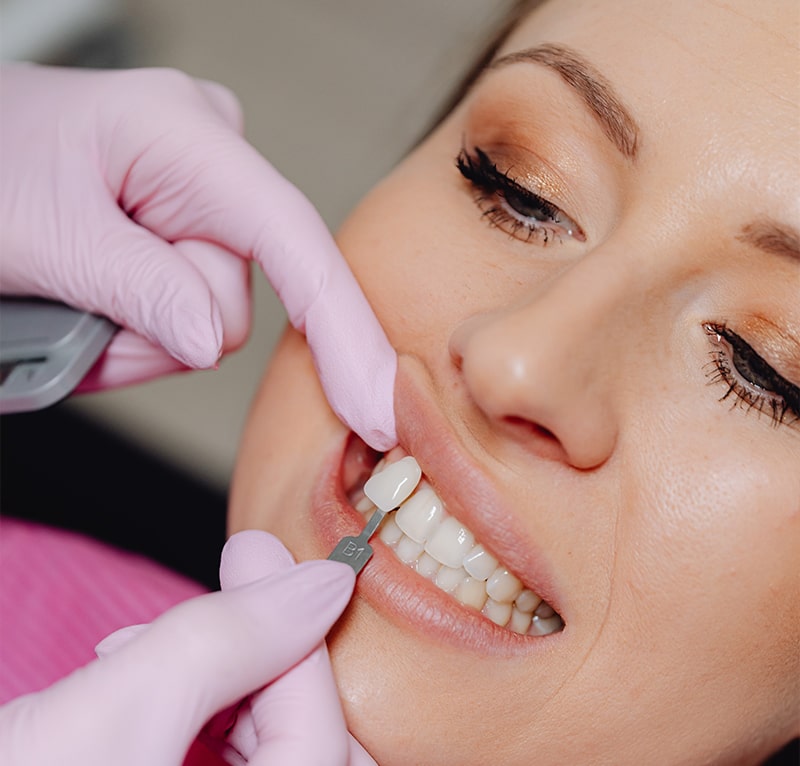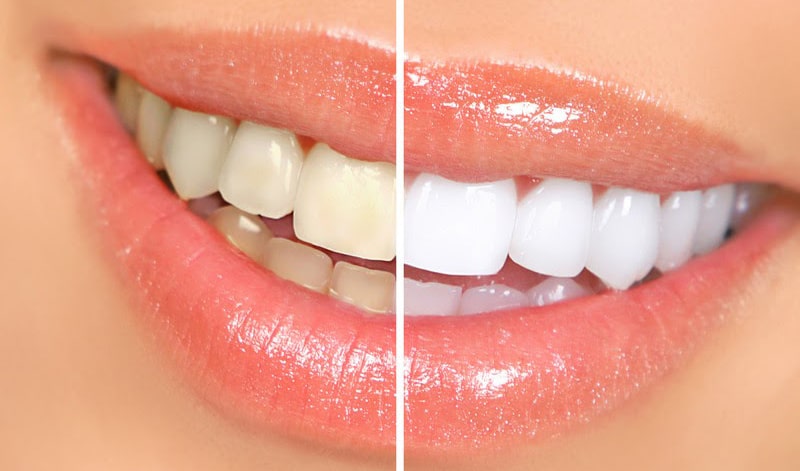Dental Veneers
A smile is the most prominent feature of the face. For that reason, esthetic dentistry has become a main focus of dentistry. At First Point Dental, we believe in dental veneers being a great solution to help you attain the look you desire. It is one solution for individuals who require recontouring of their teeth for an improved esthetic. A veneer is a thin customized shell made of tooth-colored materials that are then bonded to the front of the teeth. The dentist uses veneers to cover a tooth’s front surface to improve the appearance. Moreover, it is quite comparable to tooth enamel’s strength and resilience. This dental procedure will also protect the tooth surface from future damage and will be fixed to the natural teeth through bonding. After the treatment, one can observe visible improvement in tooth color, length, width, and shape. Post-procedure, one must maintain good oral hygiene every day for best outcomes. In addition, regular dental visits are necessary for the longevity of veneers.
Benefits of Dental Veneers
Dental veneers improve the appearance of your teeth while giving you a brighter smile. Also, dentists use the procedure to correct other cosmetic occurrences such as:
- Discolored teeth that can’t be brightened with teeth whitening procedures
- Gaps in the teeth
- Smaller than average-sized teeth
- Chipped or broken teeth
- Pointed teeth

Types of Dental Veneers
Composite and porcelain are the most commonly used materials in the U.S. today.
- Indirect Porcelain Veneers: The most commonly used dental veneer by dentists in the United States is made from porcelain. Also known as the traditional veneer, the porcelain veneer is a strong, thin cap placed on the front and side portions of the teeth. To attach it to the enamel, the dentist will remove some enamel from the tooth to ensure that it doesn’t appear too bulky and has a natural appearance. The traditional veneers are of the same color as the natural teeth in order to keep the appearance uniform. Traditional veneers’ strength and resilience are almost similar to natural tooth enamel. This veneer is best suited for individuals with teeth that are in poor shape, are fractured, and/or discolored. A porcelain veneer can solve the problem of individuals with teeth that are resistant to whitening (Bleaching).
- Direct Composite Veneers: Composite veneers are almost the same as porcelain veneers except they are more affordable and require less enamel to be removed. In some cases, there might be no removal of enamel at all. They’re easier to replace than porcelain veneers in the event of damage as this procedure is performed in the mouth with filling material. Also known as bonded veneers, they are made of resin composite material to replace the damaged tooth’s front surfaces. They are popular among people with teeth resistant to whitening. They are more vulnerable to problems like chipping or staining with a probability of more dentist visits than porcelain veneers. These veneers however are a more affordable option as opposed to porcelain and are sometimes pursued for financial reasons.
- Veneers Procedure: Usually, a minimum of 3 separate dental visits is required before the case is completed. The first visit is a consultation followed by preparation and construction. The final visit would be the application of the dental veneers. Talk to the dentist beforehand if you’re planning to undergo the veneer procedure for multiple teeth.
The Process
Step 1- The dentist will take inter oral photographs, dental X-rays and performs a complete examination to determine you are an ideal candidate for veneers.
Step 2- Tooth preparation includes the removal of a small amount of enamel to make room for the veneer. This is performed under a local anesthetic to make the patient comfortable during the procedure.
Step 3- A traditional putty impression is used to create a mold of your teeth.
Step 4- A shade guide is used to determine the adjacent teeth to choose the natural color of the veneer.
Step 5- The impression and shade are sent to the laboratory for designing veneers that fit precisely to your teeth.
Step 6- The dentist will create a temporary veneer chairside to give restoration to wear until the veneers are ready. They are not permanent and only last for a few weeks.
Step 7- In the next dental visit, the dentist will adjust and fit the veneers until they are properly placed. After this, the bite will be checked. Once adjusted, the veneer is permanently bonded to the front surface of the teeth and the excess cement is cleaned off.

You can comfortably eat and drink after your veneers are bonded. The most important thing is to take care of your veneers just like your natural teeth. Daily brushing, flossing, a healthy diet, and routine dental visits are necessary to maintain veneers for several years.
Cost of Veneers
Veneers are not covered by insurance providers as it is purely cosmetic.
- Porcelain veneer average cost- S1, 000- $2,500
- Composite veneer average cost- $600-$1,500
The cost of the procedure depends upon factors like locality, dentist expertise, and additional dental process.
